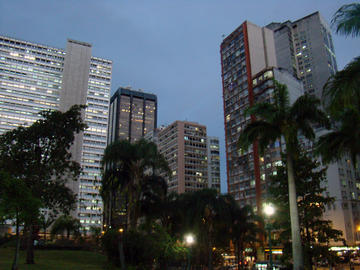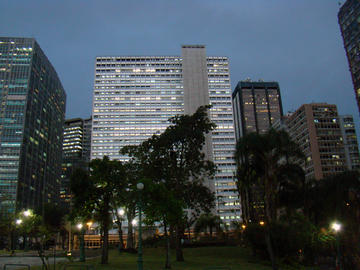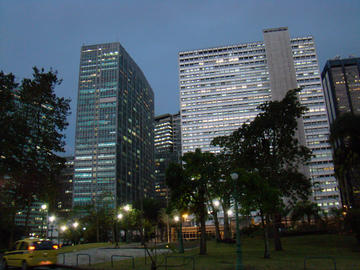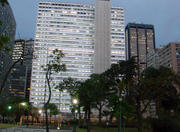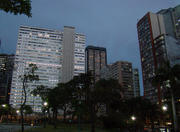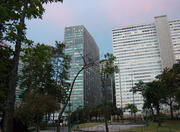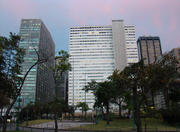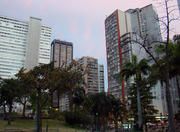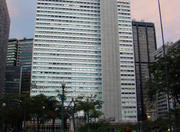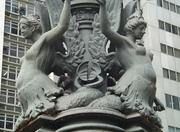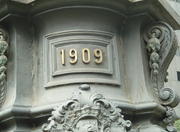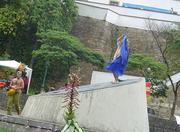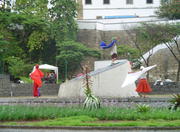Picture
More information on Largo da Carioca in Rio de Janeiro

Description: Largo da Carioca in Rio de Janeiro
The history of the Largo da Carioca is closely linked to the Convent of Santo Antonio. The Convent had its origins in a small chapel, which stood on the banks of the pond that was occupied in 1592 by Franciscan friars, Fray Antonio Martyrs and Frei Antonio das Chagas. However, its construction only began in June 1608 under the presidency of Frei Vicente do Salvador and in 1615 opened a part of the Convent and Church of Santo Antonio, where the first Mass was recited on the 8th of February. To drain the pond, the Franciscans, opened a ditch, turning bathed in Lagoa de Santo Antonio, the path of the trench gave rise to a new road called Rua da Vala, current Uruguaiana Street.
Was installed in 1619 in Rio the Venerable Third Order of St. Francis of Penance and began the construction of the Chapel of the Order, attached to the Church of the Convent, whose altar was consecrated to the Immaculate Conception, which was inaugurated in 1622.
In 1633 began the construction of a new temple, which due to disagreements between the Brotherhood and the brothers themselves and divisions among members of the Brotherhood, its execution was suspended and resumed several times. The Church of St. Francis of Penance as it exists today, except for small details, was completed in 1773, there are panels of Joseph Dias, who was the first artist from Rio and it worked well the carver Manuel de Brito, author of the stature of the Sacred Chapel and Francisco Xavier de Brito. This Church is one of the most important city and one of the jewels of Brazilian Baroque, with its interior decorated with carvings and gilded altars, Rio is rivaled only by the Church of Our Lady of Montserrat Monastery of St. Benedict. In 1933 he went to work in the architectural Sacred Art Museum.
In 1723 was inaugurated the first place in Fountain City, Fountain of the Carioca, later replaced by another, built in 1750, after the lake drained and grounded, both were supplied by aqueducts that came from the hill of Santa Teresa, the second the Arcos da Carioca. The Fountain was named to the Largo. In 1834 opened a new fountain in the same place, this being the images that often appear in paintings and postcards of Largo.
In 1748 began the construction of the Hospital of the Third Order of Penance, which opened in 1763 and remained there for a century and a half, only having been demolished in the redevelopment of the city made by Pereira Passos early in the twentieth century, when was transferred to the Rua Conde de Bonfim, in Tijuca, where it remains today.
In 50 years, a part of the Morro de Santo Antonio was demolished to be done Flamengo, but the part where it was located the church and the convent has been preserved. With the demolition came to be open to Avenida Chile.
Major changes were made during the 70's, when almost all the old buildings surrounding the square were demolished. The basement of the square is now occupied by one of the largest subway stations in the city. All car traffic was deleted off today and is reserved for pedestrians. The Monastery of St. Anthony Church and have been well preserved over the centuries, remaining in the remains of the ancient Hill of St. Anthony, now almost entirely demolished.
http://www.centrodacidade.com.br/acontece/vs_largocarioca.htm
More Photos of Picture
